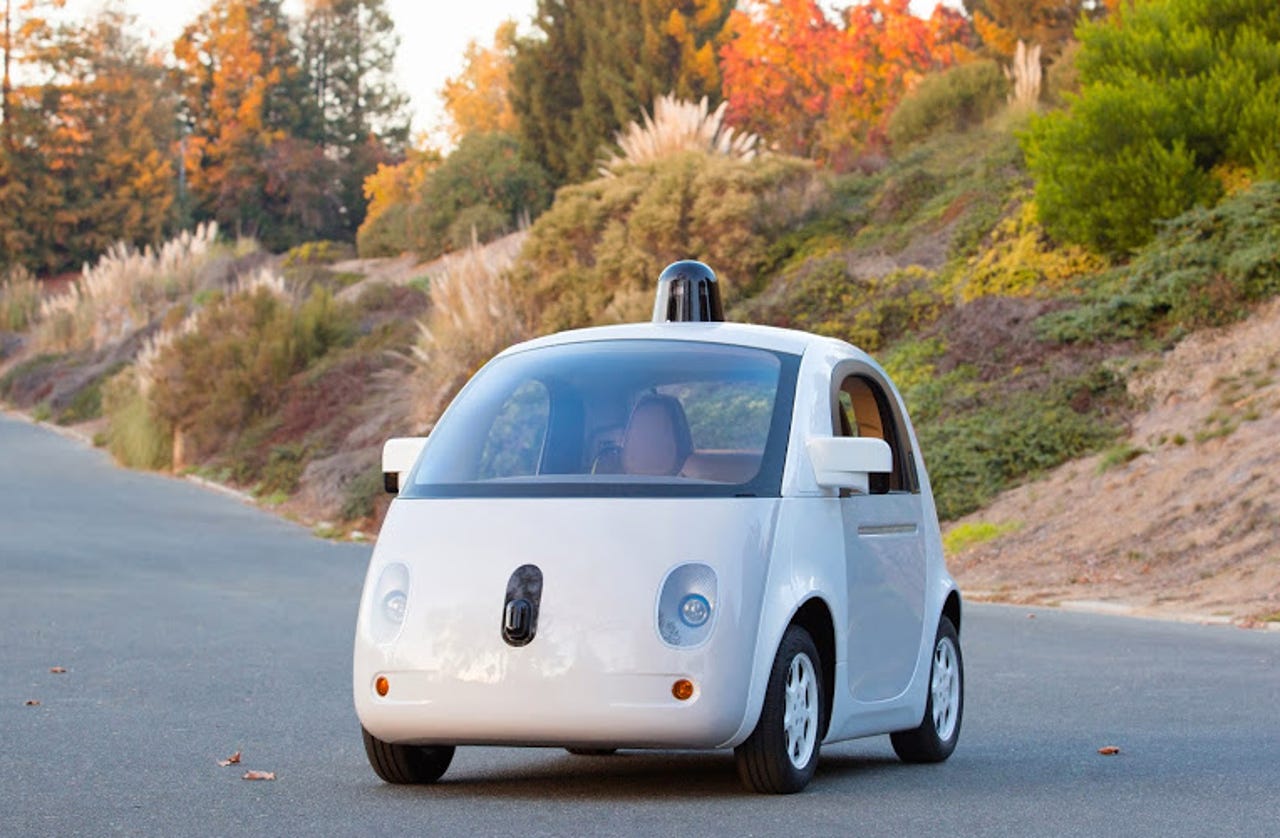Google's self driving vehicles hit road: Google Glass on wheels?


Google is about to take its self-driving vehicle protoypes---a car that has integrated the various technology systems to be autonomous---to the road. But the primary finding from this grand Google experiment will revolve around the human reaction to the vehicles.
In Google's blog post last week, the company noted that the self-driving vehicles will drive around Mountain View, Calif. with safety drivers tagging along. Safety won't be much of an issue since Google's automated cars can hardly be worse than human drivers, which cause 95 percent of accidents according to the U.S. Department of Transportation.
But Google's real test for these cars will revolve around perception. Google noted "we're looking forward to learning how the community perceives and interacts with the vehicles."
I'd argue that Mountain View is a nice baby step to gauging the community's reaction. After all, Mountain View is used to seeing geeky things. Drop these cars into Peoria or Des Moines and let's see how they fly.
With autonomous vehicles, the primary hurdle for adoption will be almost entirely cultural. As Google has learned before with Google Glass you can float a product only to see a cultural backlash. Sure, Google Glass was neat for a while, but it didn't take long for the Glasshole chorus to start. Ultimately, folks weren't ready for wearable specs that stuck out so much (not to mention film you in the locker room).
Autonomous vehicles will face a similar hurdle. Even with a safety driver riding shotgun it's unclear how the communities will react.
For instance, Ford CEO Mark Fields recently said that fully autonomous vehicles are probably two decades away. An excerpt from Fields' talk with reporters last month in New York:
"People are throwing around terms about autonomous vehicles pretty freely," said Fields. Fields put the spectrum of autonomous vehicles in a few levels. The first level is what's common today. Think about adaptive cruise control and safety features used to avoid accidents. Level 4 is the notion that you'd press a button, hop in a car, fall asleep and magically wind up at grandma's house. That level 4 scenario could take 20 years or more. "When you think about it we have a lot of the building blocks for autonomous vehicles, but there's a rate and flow of development that'll determine how quickly that comes along," said Fields.
The good news here is that Google knows that moonshots can fall way short based on how humans react to them. One Google session at Google I/O May 29 revolves around what happens when a moonshot meets the public. Here's the description:
Venture inside Google[x] for an in-depth conversation with Astro Teller, Captain of Moonshots, who will discuss one of the hardest parts of the innovation process -- the part where you come into contact with the real world, and learn what's wrong with what you've done so far. He'll explain why failure is so important to the innovation process at Google[x], and how we relentlessly seek out contact with the harsh realities of weather, physics, humanity, and much more, because so much of what we have to learn can't be predicted by a book, taught in school or observed in a lab. He'll illustrate this by sharing hard-earned lessons from Project Loon, the self-driving car, Makani and more.